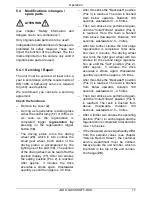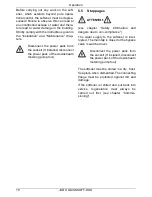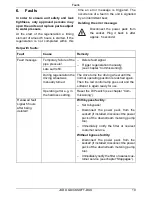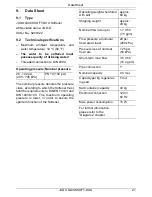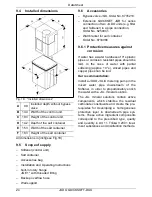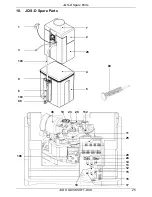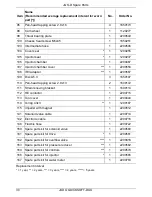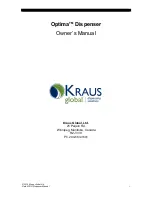
16
JUDO QUICKSOFT-DUO
Operation
5.2
Functional description
The softener has been designed with a
single column, which can be regenerated in
two steps. During regeneration the two
steps alternately supply the soft water.
Thus, soft water is always available for use
during regeneration.
With the very short regeneration period of
max. 18 minutes for both regeneration
stages together, conditions can be created
even for maximum continuous drawing off,
which can otherwise only be achieved by
expensive and larger pendulum systems.
A water meter installed in the soft water pipe
precisely records the quantity of soft water
produced and triggers regeneration
according to the raw water hardness set at
the electronics. The regeneration is carried
out with economic salt use according to DIN
19636. The system is regularly disinfected,
in order to prevent contamination with
germs. The small quantity of chlorine
required for this is electrolytically generated
during regeneration from the drawn in brine.
The filter cases are filled with ion exchange
resin. These are small synthetic resin
spheres on which the calcium ions, which
make the water “hard”, are exchanged for
sodium ions. This makes the water soft.
However, the ion-exchange resin only
absorbs a limited quantity of hardness
constituents. Depending on the water hard-
ness, sooner or later it is exhausted. The
exhaustion time is recorded by the water
meter and the regeneration is automatically
initiated. Here diluted brines (sodium chlo-
ride) are used to remove the hardness
constituents from the resin again.
Regeneration automatically takes place
through wear free ceramic discs. The regen-
eration sequence is fixed by the geometry of
the discs and therefore does not have to be
re-entered even in case of a power failure.
If a very high quantity of water is drawn off
(e.g. flush valve) and this leads to a pres-
sure loss in the softener greater than around
12 psi (80 kPa), an overflow valve integrated
in the control head opens in order to allow
hard water to pass by the system and there-
fore reduce the pressure loss. However, the
mixed water hardness in the pipe down-
stream of the softener increases for a short
time as a result.
5.3
Salt fill
As the softener functions automatically, you
only have to refill it with regeneration salt
from time to time.
At the latest when the “Top up salt” sticker
becomes visible in the salt container.
The salt stocks should not be allowed to
reduce so much that the liquid level is above
the regenerating salt, otherwise it rises
excessively when the salt is refilled. The
liquid level should be 4 - 4.8 inches above
the floor of the container.
If the container is not refilled in good time the
solid regenerating salt displaces the brine.
An unnecessarily large amount of brine is
drawn up during the next regeneration, the
intake procedure takes a correspondingly
longer time.
Our recommendation: Broxo or Solvay
salt, either as a block, tablets or coarse
grains 0.3 - 0.6 inches.
ATTENTION
(see chapter “Safety information and
dangers due to non-compliance”)
If there is no more regenerating salt in the
container or if it is not refilled in good time,
the softener switches to economy operation:
The brine stocks still available are primarily
used for disinfecting the ion exchange resin
and the softening effect is reduced.
In this way, the softener remains in a
hygienically safe condition for weeks after
the regenerating salt shortage occurs.
















